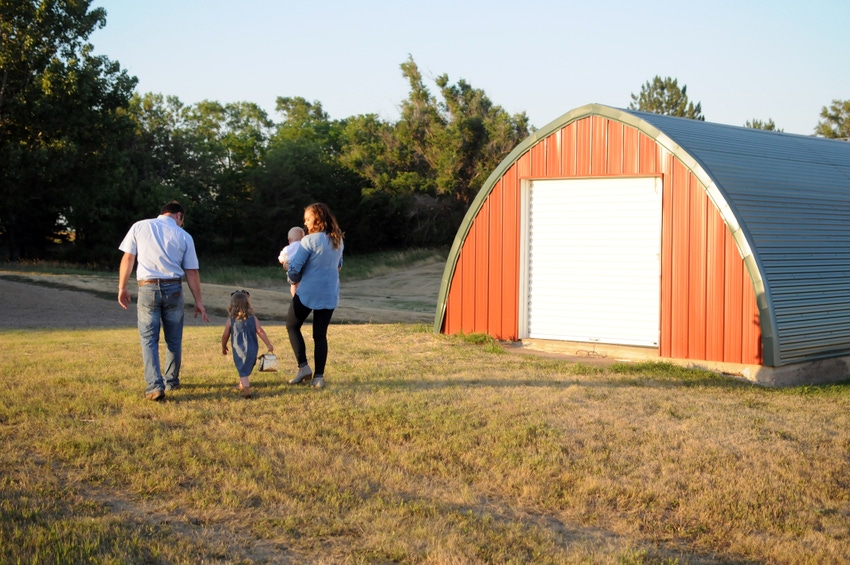The dynamics of multi-generation ranching operations are complex, but without regular meetings and a concrete plan in place, is the business doomed?
January 27, 2018

There are only two certainties in life — death and taxes; however, it’s discussions about finances and what happens after we die that are two topics of conversations it seems a family works incredibly hard to avoid.
Yet, it’s these two topics that we must face head on if we want to retire comfortably, be fair to our children and transition our ranch legacy to the next generation.
I spoke on this topic last week at the 2018 Montana’s Next Generation Conference in Shelby, Mont., where I shared my family’s experiences as I moved home from college with a new husband in tow. I explained how we have found our place on the ranch by adding to the pie through diversification rather than cutting the pie in half to support two families and offered advice for millennial producers on managing expectations and communicating with other family members.
Joining me in the discussion was Elaine Froese, a Manitoba seed farmer and certified coach specializing in farm/ranch transition planning, who hosted a five-hour workshop deep-diving into the tangible action items that need to be determined in a proper transition plan. Ultimately, she said a solid plan accomplishes three things — empowers the family, increases profitability and secures the agricultural legacy.
READ: Estate planning is more than just a will
1. Empower family
Which child is the best to take over the ranch? What is your personal timeline for an exit strategy? Are your kids aware of this plan, so they can make informed decisions of their own?
Froese says, “Talk openly about what the business means to each family member. Also, talk about the fun memories on the farm or ranch, about the legacy created by hard work and sacrifice, and [that] everyone should share the hopes and dreams for the future.
“Choose successors based on skill sets and passion to manage farm risk, not gender or birth order. This is 2018; daughters can run farms. And encourage potential successors to work for a non-family member for a few years.”
2. Increase profit
What will the income stream be for the founders once they are retired or too old to work? Can the successors make the payments and still live? How much debt can you sleep with at night? We all want our operations to make more money. Profitability not only allows for a good life, but having the flexibility to take advantage of opportunities for growth in the operation.
Froese says, “Families who have regular business meetings are 21% more profitable. Do know the financial viability of the farm and share it with the next generation. How many families, and at what lifestyle income level, can this farm business support? The older generation should share farm financial information with the next generation. Knowing about debt servicing, cash flow and input costs is a great education in reality for young people, especially teens.”
READ: Ready to transition the ranch? Slow and steady wins the race
3. Secure legacy
According to the 2016 Agri-Food Management Institute survey of farmers, only 16% of farms had a succession plan, despite it being in the top three goals for the operation (right after profitability and debt reduction.)
In addition to having stressful, emotionally-charged discussions about the loss of a loved one, Froese says, “The younger generation may find it intimidating to ask for something that’s so valuable (financially, traditionally and emotionally) that their parents have worked so hard for. And some parents, who maybe are finally feeling financially stable, are frightened that transition could topple the boat again and take it in a riskier direction.”
She stresses that families shouldn’t be afraid of asking “What if?” or “What do you want?” types of questions to figure out the best scenario for all parties. By using a facilitator, Froese says with private conversations with all involved individuals, clearer expectations can be communicated and best courses of action can be set into place.
While it can be easy to procrastinate on these discussions, don’t wait for a farm accident, a health scare, a family fight that can’t be repaired or other unexpected factors that could greatly impact your business to be the force that gets you to take action. Start having those family business meetings now and be confident in your future financial security, your family’s happiness and the long term success of your farm and ranch legacy.
The opinions of Amanda Radke are not necessarily those of beefmagazine.com or Farm Progress.
About the Author(s)
You May Also Like




.png?width=300&auto=webp&quality=80&disable=upscale)
